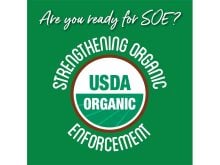It has been a year of producer pain, low incomes, low farmgate prices, losses and herd liquidation in Canada’s livestock industry.
But that would not be obvious from retail meat prices during the past year when consumers found themselves paying meat prices that had risen far higher than general inflation rates.
According to the Statistics Canada February Consumer Price Index published March 19, supermarket retail beef prices increased 9.1 percent during the past year while pork prices were up 5.7 percent.
The overall annual food inflation number was 7.4 percent in February, eclipsing the general annual inflation rate of 1.4 percent.
Read Also

U.S. bill could keep out Canadian truckers
The Protecting America’s Roads Act, which was tabled in the U.S. House of Representatives at the beginning of October, would “rid the country of illegal immigrant commercial truck drivers and ineligible foreign nationals.”
The fact that there was a general CPI increase in February caught some economists by surprise because they had been fretting that with the recession, consumers might quit spending and the resulting lower prices would create deflation.
Food prices were almost solely responsible.
“Out of the major components (of the CPI calculation), upward pressure on the CPI came largely from an increase in prices for food,” said Statistics Canada. “Excluding food, the CPI rose 0.2 percent in the 12 months to February.”
In January, the general inflation rate was 1.1 percent, again fuelled almost entirely by a 7.3 percent increase in food prices.
Falling fuel prices have pushed inflation rates down.
The federal agency said the highest food price increases in retail stores came in fresh fruit and vegetables, usually imported from the United States during the winter. The weak Canadian dollar makes the price of imports from the U.S. higher.
Fresh vegetable prices were up 25.8 percent year-over-year in February.
Cereal-based products increased 11.4 percent during the year, reflecting higher farmgate prices. Flour-based products increased more than 17 percent over the year.
And dairy product prices were 5.5 percent more expensive on average in February 2009 than in February 2008, following decisions by the Canadian Dairy Commission to raise dairy support prices twice during the year to reflect higher producer input costs.
Food prices in retail stores actually increased far more than food purchased in restaurants.
Statistics Canada calculated that the average price increase for restaurant meals was 4.1 percent during the year, little more than half of the overall food inflation rate.
















